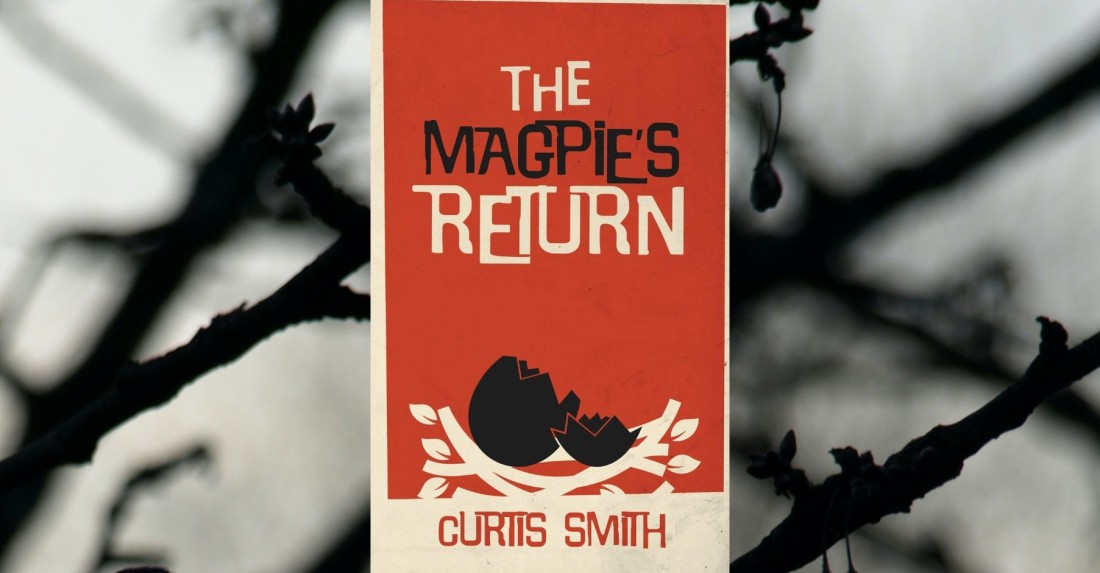What happens when the poor magpie returns to her nest, only to find that an interloper, a cuckoo, has supplanted her? This is the metaphorical question at the heart of Curtis Smith’s new dystopian novel, The Magpie’s Return.
Kayla, just finishing the eighth grade when we meet her, is a genius. Or, at least, that’s what the psychologists say. She realizes that her talent isn’t just about IQ, however. “My condition has less to do with intelligence than with vision, for I see the world in layers, in ever evolving webs of connection.” Which is why her parents, a botanist and a poet, treat her more like an adult than a child, and it’s also the source of her inner reserves of strength.
Those reserves will ultimately serve her well as the novel’s multiple crises unfold, but we first see them early on when Kayla dispatches with a single punch the leader of the mean girls who dominate her school. She is further tested by a global shut-in—eerily similar to our current pandemic lockdown—imposed as a result of fallout from a nuclear war in Asia and by the growing fascist demagoguery of a newly elected President.
The fascists, represented locally by the family’s next-door neighbor, embark on an anti-intellectual crackdown, reminiscent of China’s Cultural Revolution, and on a dissident movement in which Kayla’s father is a leader. As a result of a violent clash between these opposing forces, Kayla’s home—the magpie’s nest—is expropriated and she is separated from her family. Thus begins her quest for answers and security in her world’s new reality.
While the novel is not a perfect parallel for what is happening in America today, it does raise questions that are increasingly pertinent. Have we lost our way in the Twenty-First Century? Have we abandoned science and art in favor of purity and ideology? What is the proper role for religion in governance? Is blind allegiance really patriotic? Or do we owe it to our country to be critical when we see it straying from its founding principles?
In telling Kayla’s story, Smith makes artistic choices that contribute to both the tension of the novel and the reader’s understanding of its protagonist’s state of mind. The first part of the book is told in Kayla’s first person point of view, allowing us to come to know her thinking and motivation. But in the critical section immediately after she becomes separated from her parents, the narrative shifts to second person. “You awake to a chickadee. A high-pitched feebee, feebee. One near, another far. A call and response your father taught you. You picture the chickadee’s tufted heads, their nervous glances.” The second-person point of view can be an effective tool in demonstrating a trauma that shocks a character out of a unified consciousness, allowing her to separate herself from the horror that she is experiencing. In Part III, when a tenuous stability is restored, Kayla must distance herself further in order to survive. Here the narrative shifts to third person. The climax and resolution of the book reverts to first person, signaling the magpie’s return and the re-emergence of Kayla’s strength.
The other choice Smith makes that the reader might not notice is his heavy reliance on sentence fragments. The fragments reveal Kayla’s shattered state of mind, almost as if she is now seeing the world through a deeply fractured window, but also her focus on what is critical to her purpose. Given her extreme trauma, the grammatical fragmentation is highly appropriate and effective. One example is this moment late in the novel when Kayla is engaged in a fight with another girl: “The broken mop handle slips from her cuff. The back stairwell, their plans. The strobe and alarm a short-circuit in her thoughts. The stands on trembling legs. The back stairwell, their plans. The truck key.“
It is tempting to see in any contemporary dystopian fiction a call to resistance, just as many see Margaret Atwood’s The Handmaid’s Tale and its sequel as warnings of what will happen to our society if we continue down the road we’re on. Perhaps that is Smith’s purpose with The Magpie’s Return. Or perhaps he is simply giving readers a finely crafted thriller about a young heroine who finds the strength to fight for her own survival.
The Magpie’s Return
By Curtis Smith
Running Wild Press
Published August 1, 2020


